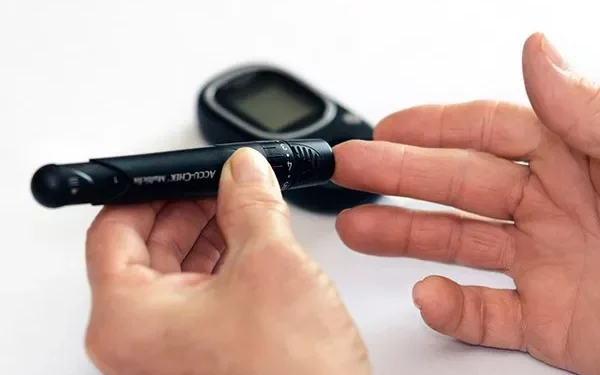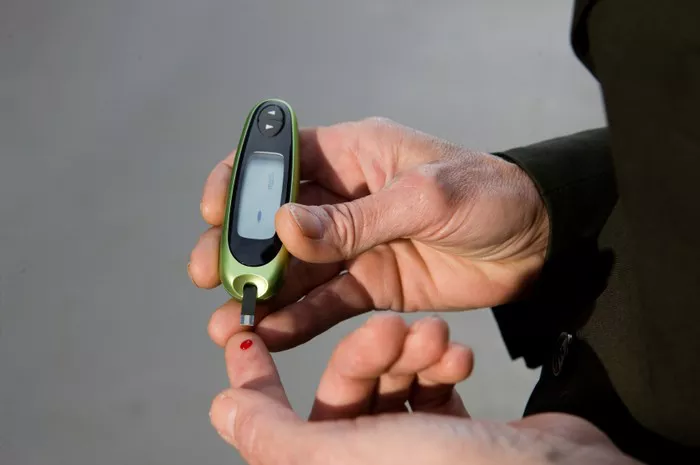As technology continues to revolutionize healthcare, wearable devices have become an increasingly popular way to monitor various aspects of health, including physical activity, heart rate, and sleep patterns. One question that often arises is whether there is a Fitbit that tracks blood sugar levels, especially as diabetes management increasingly focuses on integrating technology to simplify blood glucose monitoring. While Fitbit has become synonymous with wearable fitness tracking, the ability to monitor blood sugar levels directly with a Fitbit is an area still evolving.
In this article, we’ll explore the current state of Fitbit technology in relation to blood sugar monitoring, review available options for people with diabetes, and examine the future potential of continuous glucose monitoring (CGM) integration with Fitbit devices.
Fitbit Overview
Fitbit is a well-known brand that offers a range of wearable fitness trackers and smartwatches designed to monitor various health metrics. The devices track steps, heart rate, sleep, calories burned, and activity levels, making them useful for maintaining overall fitness and wellness. Fitbit’s mission is to empower people to lead healthier lives by providing real-time data that can be used to make informed health decisions.
However, when it comes to blood sugar monitoring, Fitbit does not currently offer a device that directly measures blood glucose levels on its own. This limitation is important to understand, especially for those managing diabetes, as continuous monitoring of blood sugar is a critical aspect of diabetes management.
Continuous Glucose Monitoring (CGM) and Diabetes Management
For individuals with diabetes, blood glucose monitoring is an essential daily task to ensure that blood sugar levels remain within a target range. The development of Continuous Glucose Monitoring (CGM) systems has made this process more efficient and less invasive than traditional finger-prick methods.
CGMs are devices that measure glucose levels in the interstitial fluid (the fluid between cells) and provide real-time data on blood sugar levels. They typically consist of a small sensor placed under the skin, which sends glucose readings to a monitor or smartphone app every few minutes. This data helps individuals track trends in their blood sugar levels throughout the day and night, and provides alerts for high or low blood sugar events.
Popular CGM systems include the Dexcom G6, Freestyle Libre, and Medtronic Guardian Connect. These devices are specifically designed to continuously monitor blood glucose and have been life-changing for many people with diabetes.
Fitbit and Blood Sugar Tracking: Current Integrations
Although Fitbit devices cannot directly monitor blood sugar, they can integrate with CGM systems to display glucose data on the Fitbit app. Fitbit has formed partnerships with CGM manufacturers like Dexcom to offer users the ability to view their blood glucose data alongside their other health metrics. This integration allows people with diabetes to see how their blood sugar levels respond to physical activity, food intake, stress, and sleep.
Dexcom and Fitbit Integration
One of the most notable integrations between a CGM and Fitbit is the Dexcom G6, a CGM that can be paired with Fitbit’s app through certain smartwatches, such as the Fitbit Ionic and Fitbit Versa series. This integration allows Dexcom users to view their blood sugar levels directly on their Fitbit device. Here’s how the integration works:
Syncing the Devices: The Dexcom G6 sends blood glucose data to the Dexcom app, which then syncs with the Fitbit app. Fitbit users can view their glucose levels in real-time on their watch or smartphone, alongside other metrics like steps and heart rate.
Data Visualization: Fitbit provides users with a comprehensive view of their health by showing glucose trends alongside exercise, diet, and sleep data. This allows for better understanding of how different factors affect blood sugar levels, enabling more informed decisions about insulin, medication, and lifestyle adjustments.
This integration, however, still relies on the Dexcom G6 CGM to provide blood glucose readings. Fitbit itself does not have a sensor capable of measuring glucose levels directly from the skin or bloodstream.
Third-Party Apps for Fitbit and Blood Sugar Monitoring
In addition to direct integration with CGM systems like Dexcom, Fitbit users can take advantage of various third-party apps that allow them to manually log and track blood glucose levels. These apps can sync with Fitbit to display blood sugar data along with other health metrics.
MyFitnessPal: MyFitnessPal is a popular app for tracking food intake and exercise. While it does not monitor blood glucose directly, it allows users to log their blood sugar levels manually and provides insights into how food and exercise impact blood sugar.
Glucose Buddy: Glucose Buddy is a dedicated diabetes management app that allows users to log blood glucose levels, medications, insulin dosages, and other health data. The app can sync with Fitbit to provide a more comprehensive view of the user’s health.
One Drop: One Drop is another app designed for diabetes management that allows users to track blood sugar, food, medication, and exercise. It can sync with Fitbit devices to incorporate physical activity data into the user’s overall diabetes management plan.
These third-party apps can help people with diabetes keep track of their blood sugar levels, even if Fitbit devices cannot measure glucose directly. By manually inputting blood sugar data or syncing it from a CGM, users can combine this information with Fitbit’s health tracking features for a more holistic approach to managing diabetes.
The Future of Blood Sugar Monitoring with Fitbit
As technology advances, there is growing interest in developing non-invasive glucose monitoring systems that could be integrated into wearable devices like Fitbit. This would allow users to monitor their blood sugar levels continuously without the need for invasive sensors or finger-prick tests.
Research and Development in Non-Invasive Glucose Monitoring
Researchers and companies are actively working on non-invasive glucose monitoring technology that could revolutionize diabetes management. Some approaches being explored include:
Optical Sensors: Some companies are developing wearable devices with optical sensors that use light to measure glucose levels through the skin. This technology is still in the experimental stage, but it holds promise for non-invasive glucose monitoring.
Sweat and Saliva Sensors: Other researchers are investigating ways to measure glucose levels through sweat or saliva. These fluids contain glucose, and the development of accurate sensors that can detect glucose in sweat or saliva could potentially lead to non-invasive monitoring devices.
Smartwatches with Glucose Sensors: While Fitbit has not yet developed a device that can measure glucose directly, other companies are working on smartwatches and wearables with built-in glucose sensors. If successful, these devices could provide continuous glucose monitoring without the need for a separate CGM system.
While these technologies are still in development and have not yet reached the market, the potential for non-invasive glucose monitoring integrated into wearables like Fitbit is exciting. It could significantly reduce the burden of diabetes management by eliminating the need for finger-pricks or sensor insertions.
Challenges and Considerations
Although the idea of non-invasive glucose monitoring through wearables is promising, there are still significant challenges to overcome. One of the main issues is the accuracy of the technology. Blood glucose levels can fluctuate rapidly, and small variations in measurement can have significant implications for diabetes management. Ensuring that non-invasive sensors provide accurate and reliable readings is critical before such devices can be widely adopted.
Additionally, any wearable device that monitors blood glucose would need to receive regulatory approval from health authorities such as the U.S. Food and Drug Administration (FDA) or the European Medicines Agency (EMA). This approval process can be lengthy and rigorous, as the device must meet strict safety and efficacy standards.
Finally, the cost of such devices could be a barrier for some people with diabetes. While current CGMs are already expensive, the development of advanced wearable glucose monitors could drive costs even higher. It’s essential for manufacturers to consider affordability and accessibility when bringing these products to market.
See also: What Is a Good HbA1c Level?
Conclusion
As of now, there is no Fitbit device that directly tracks blood sugar levels. However, Fitbit has made strides in integrating with CGM systems like Dexcom, allowing users to view their glucose data alongside other health metrics. Additionally, third-party apps can be used to log and track blood sugar levels manually, making Fitbit a valuable tool for overall health monitoring, even if it cannot measure glucose directly.
The future of blood sugar monitoring with Fitbit and other wearable devices looks promising as researchers work towards developing non-invasive glucose monitoring technology. While it may still be a few years before we see a Fitbit that can track blood sugar independently, the advancements in wearable technology and diabetes management are exciting. For now, individuals with diabetes can continue to benefit from the existing integrations and features that help them manage their condition more effectively.
In the meantime, keeping an eye on developments in this field is essential, as breakthroughs in non-invasive glucose monitoring could transform the way diabetes is managed in the near future.
Related topics:
What Blood Sugar Level Is Insulin Required

























